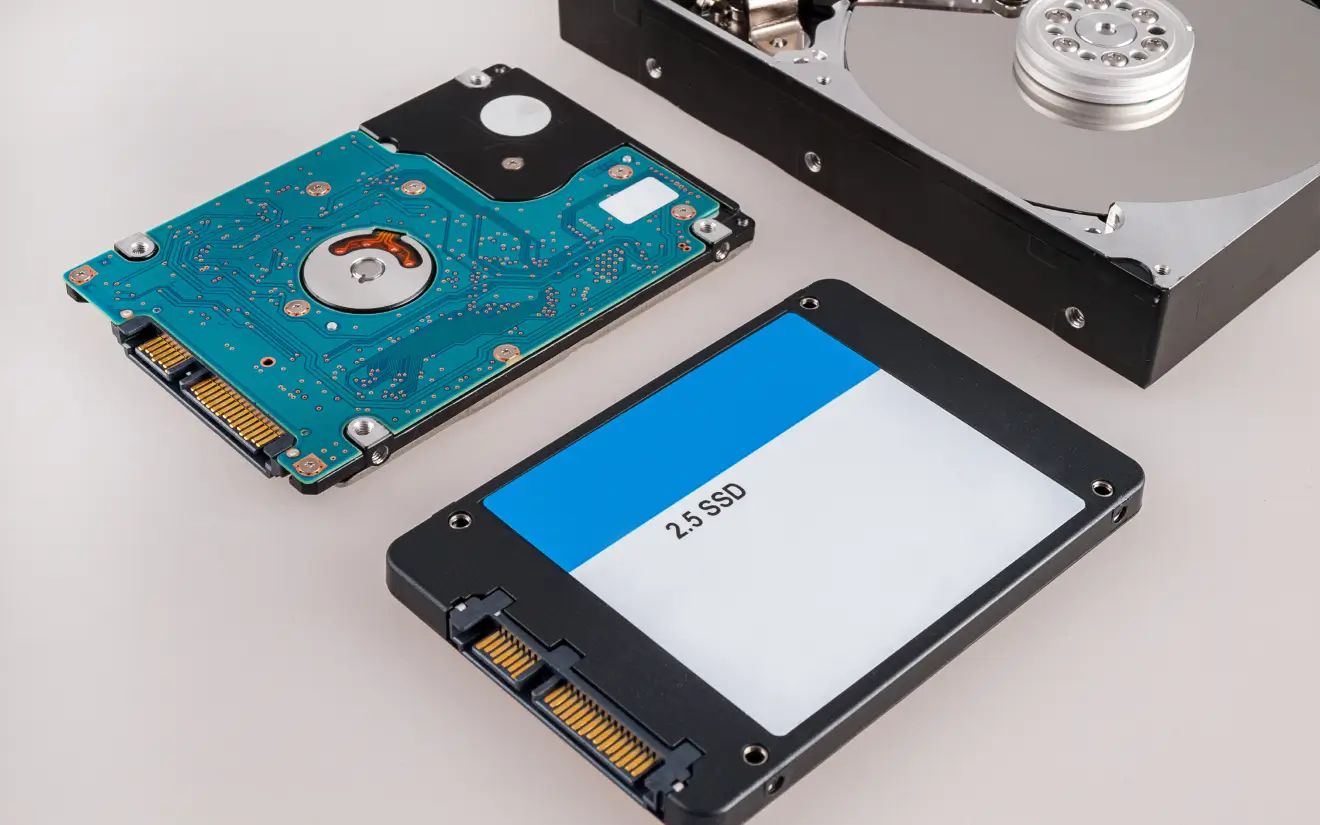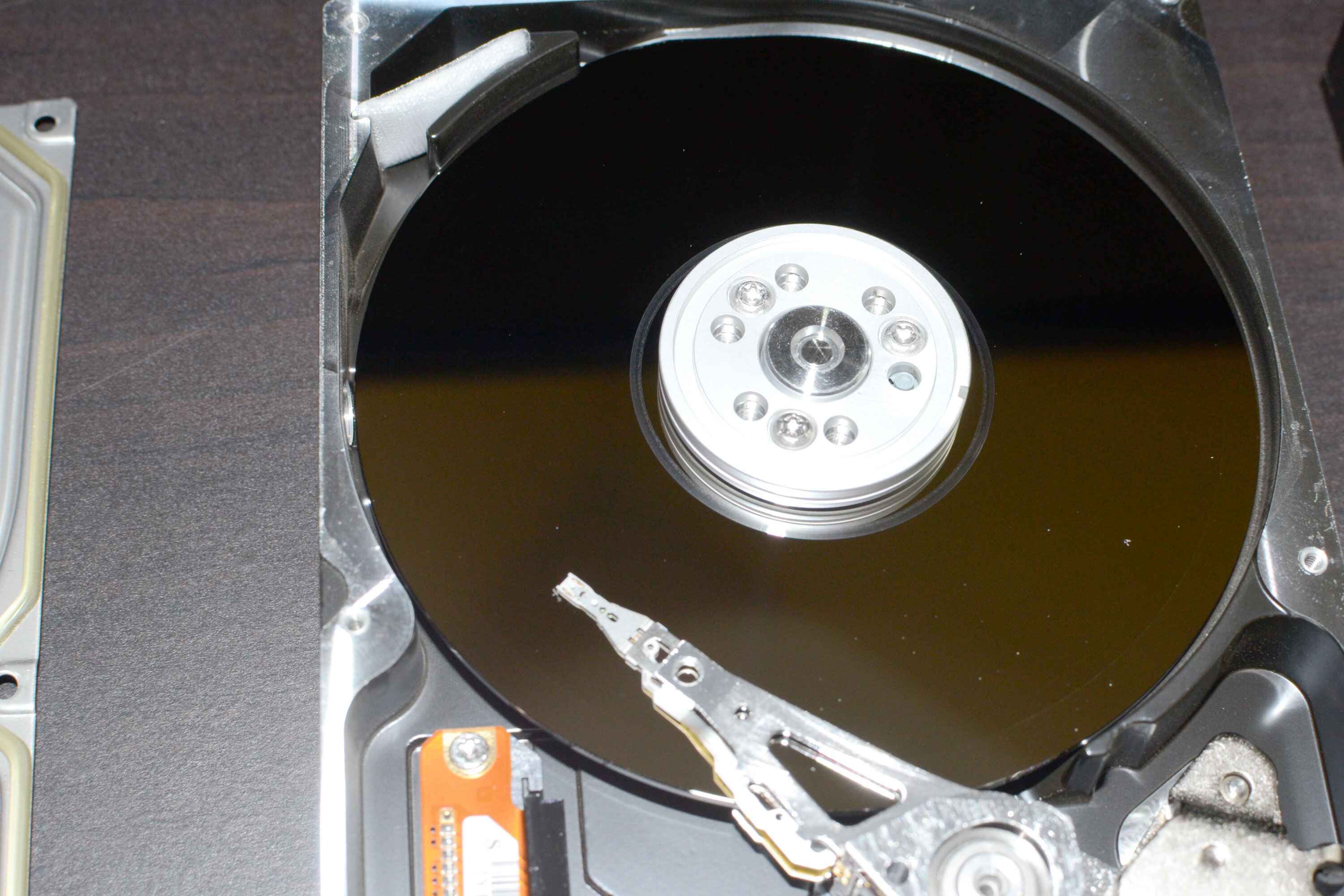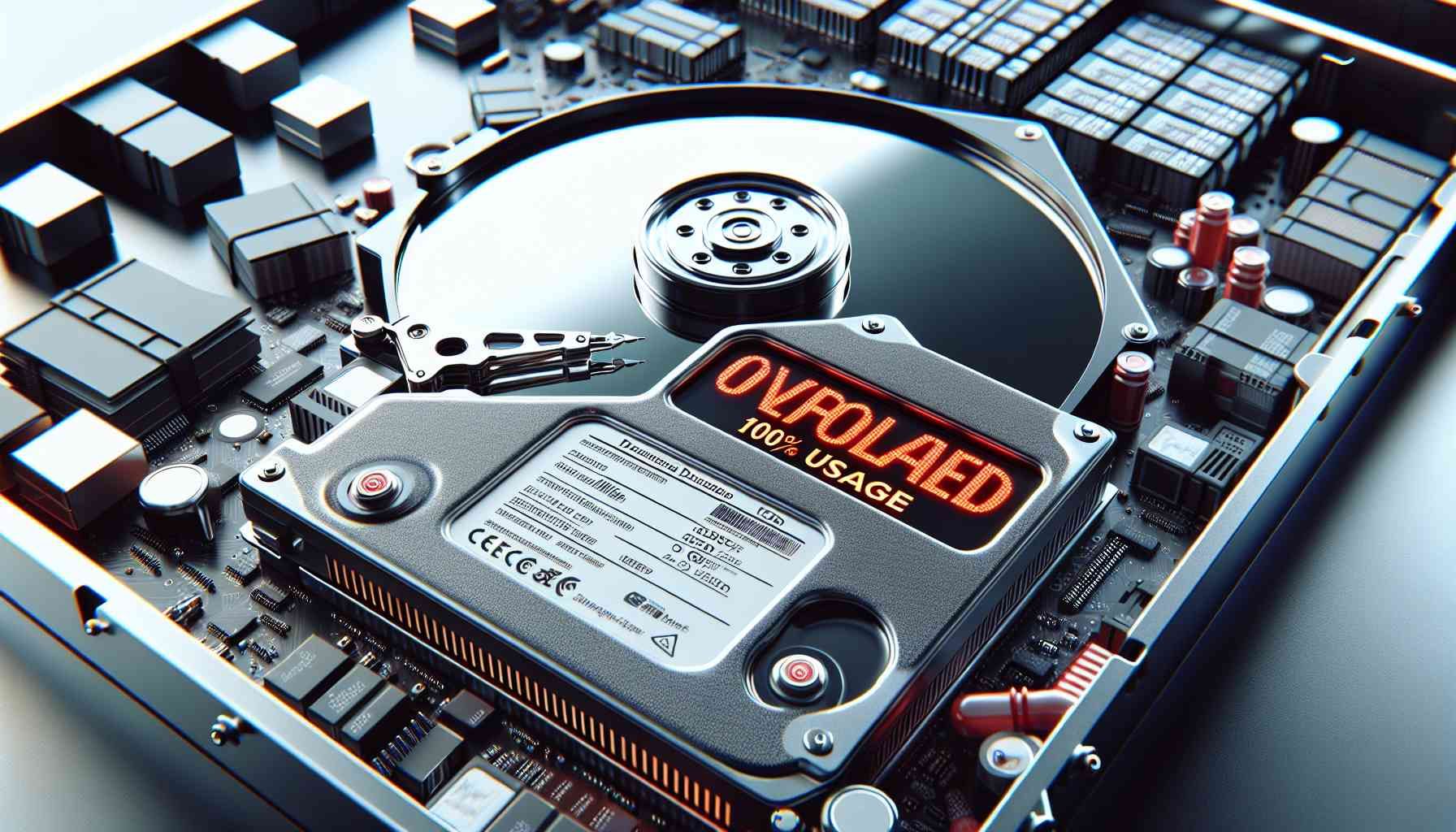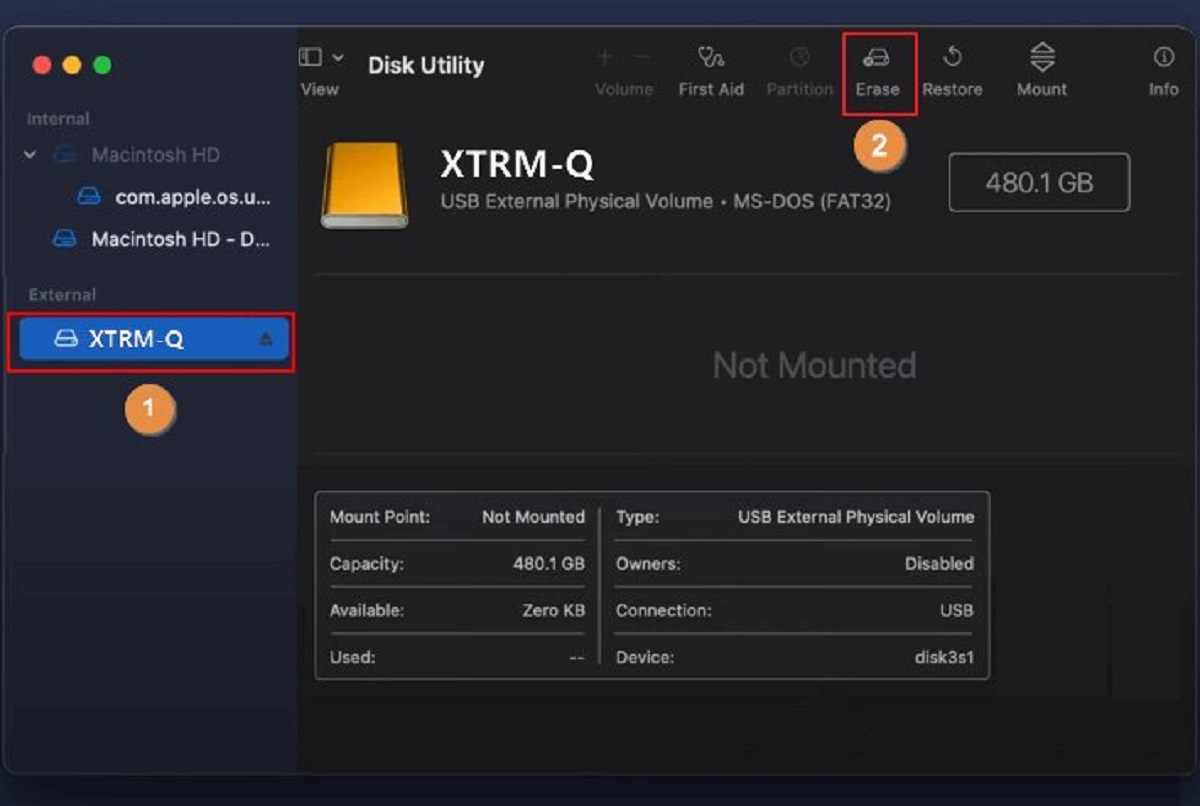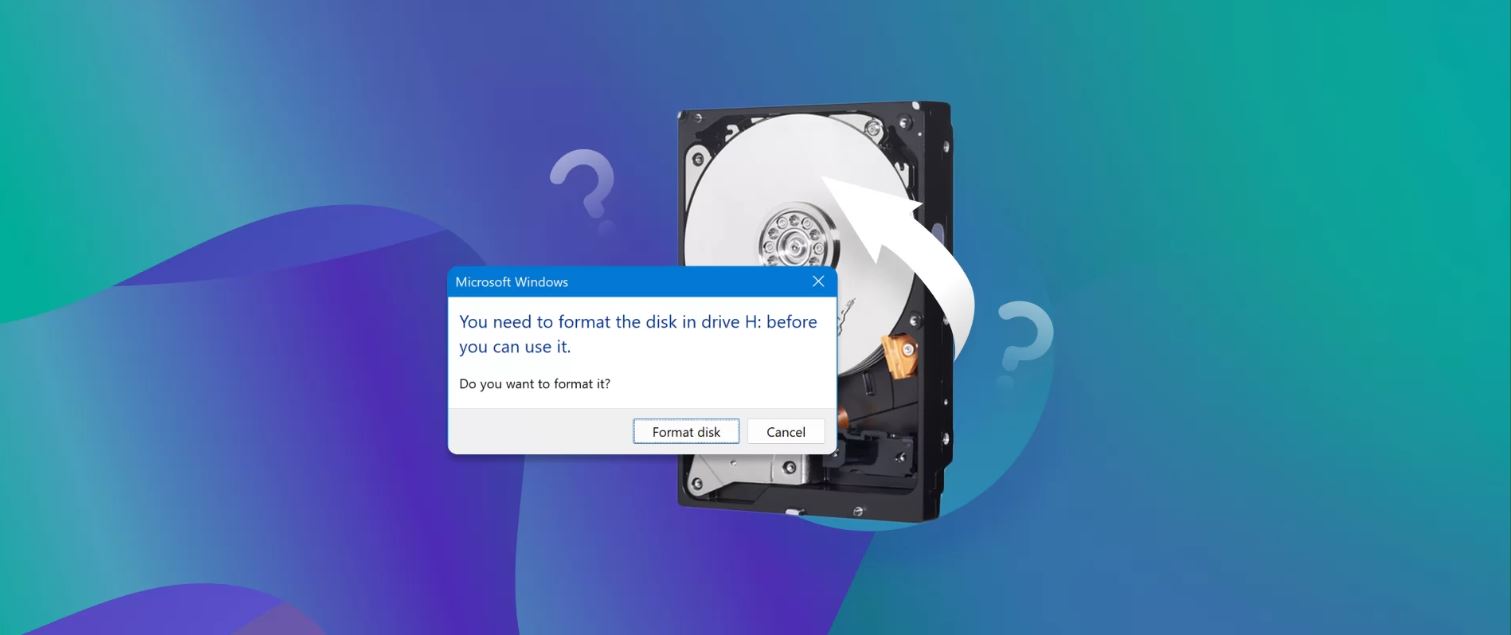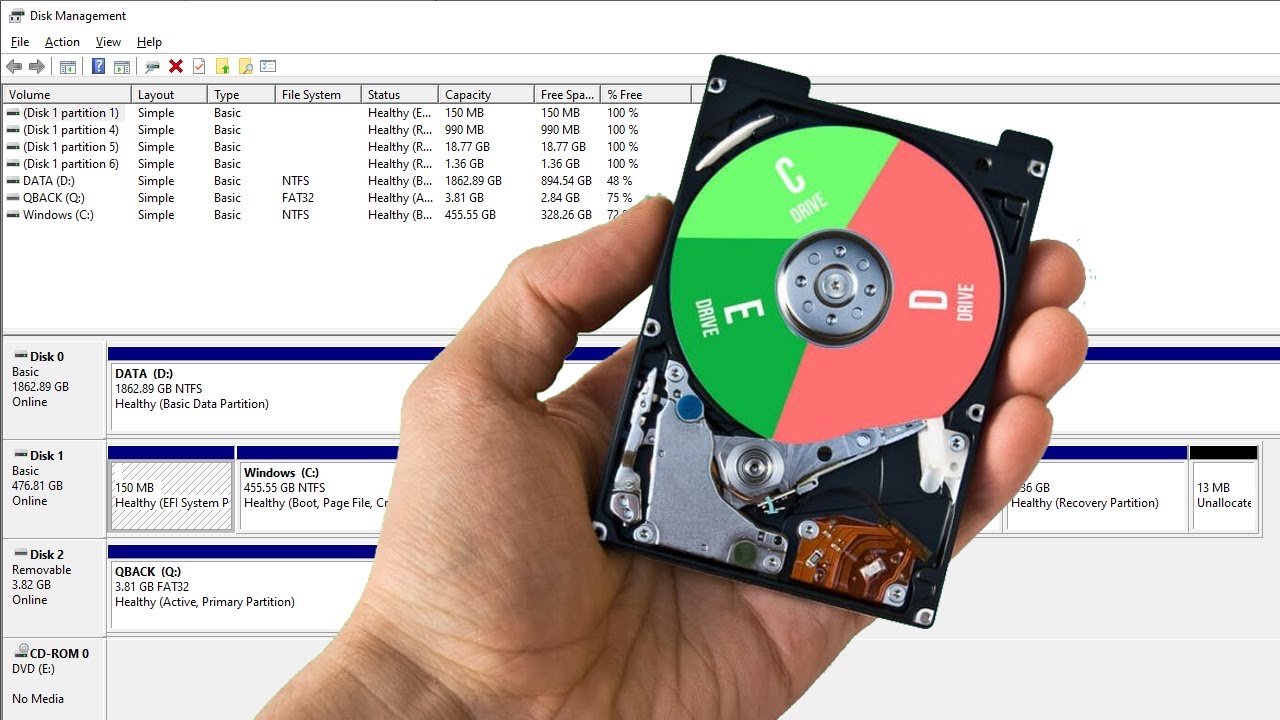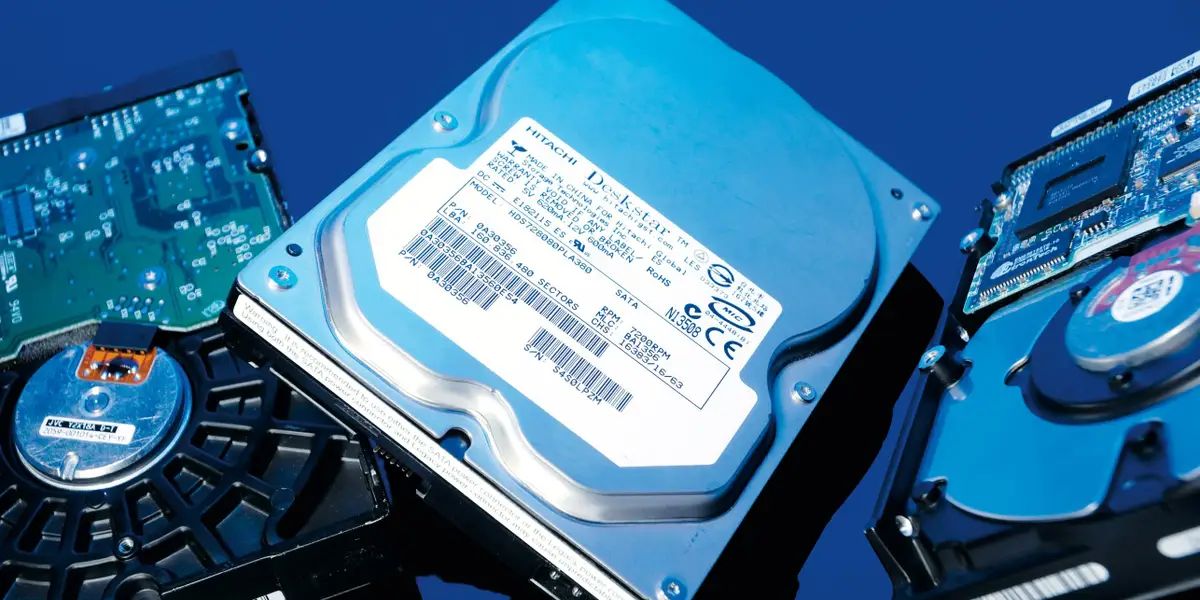Introduction
When it comes to accessing files stored on a hard disk drive (HDD), there are several options available depending on the operating system you are using. Whether you are using a Windows, Mac, or Linux system, each operating system has its own file system and methods for accessing and managing files.
A file system is a way of organizing and storing files on a disk drive. It determines how files are named, stored, and accessed. The most common file systems used are NTFS (New Technology File System) for Windows, HFS+ (Hierarchical File System Plus) for Mac, and Ext4 (Fourth Extended File System) for Linux.
In this article, we will explore the different options for accessing files on a hard disk drive for Windows, Mac, and Linux systems. We will also cover the use of command line interfaces for advanced users, and touch on permissions and security considerations when accessing files.
Whether you are a novice user or an experienced technician, understanding the various methods of accessing files on your hard disk drive is crucial. So, let’s delve into each operating system’s approach and learn how to efficiently access all the files stored on your HDD.
Understanding file systems
Before diving into the specifics of accessing files on different operating systems, it’s important to have a basic understanding of file systems. A file system is a structured method used by an operating system to organize, store, and retrieve files on a storage device like a hard disk drive.
The file system determines how data is stored, organized, and managed on the storage device. It defines the rules and structures for naming files, organizing them into folders, and managing file attributes such as permissions and ownership.
Windows uses the NTFS (New Technology File System) file system, which provides advanced features like file and folder encryption, disk quotas, and file compression. NTFS is known for its stability, security, and support for large file sizes and volumes.
Mac systems, on the other hand, use the HFS+ (Hierarchical File System Plus) file system. HFS+ is designed specifically for Apple’s macOS and offers support for metadata, journaling, and time machine backups. In recent years, Apple has transitioned to using the Apple File System (APFS) as the default file system on newer devices.
Linux primarily uses the Ext4 (Fourth Extended File System) file system, which is an enhanced version of the earlier Ext3 file system. Ext4 provides improved performance, reliability, and supports larger file sizes and volumes.
Understanding the file system used by your operating system is crucial as it determines which tools and methods you can use to access and manage your files. Let’s now explore how to access hard disk drive files on Windows, Mac, and Linux systems.
Accessing hard disk drive files on Windows
Windows provides several ways to access files stored on a hard disk drive. The most common method is through the File Explorer, the default file management tool in Windows.
To access your hard disk drive files using File Explorer, follow these steps:
- Open File Explorer by clicking on the folder icon in the taskbar or pressing the Windows key + E.
- In the left sidebar of File Explorer, you will find a list of drives. Locate and click on the drive where your files are stored, typically labeled as “Local Disk (C:)” for the primary hard drive.
- The files and folders stored on that drive will be displayed in the main area of File Explorer. You can navigate through folders by double-clicking on them.
- To access a specific file, simply double-click on it, and it will open in the associated program.
Another way to access hard disk drive files on Windows is through the Command Prompt. This method is preferred by advanced users or those who prefer working with the command line interface.
To access files using the Command Prompt, follow these steps:
- Open the Command Prompt by searching for “Command Prompt” in the Start menu or by pressing Windows key + R and typing “cmd” in the Run dialog box.
- In the Command Prompt window, navigate to the desired location using the “cd” command. For example, to navigate to the C:\Users\YourUsername\Documents folder, type “cd C:\Users\YourUsername\Documents” and press Enter.
- Once you have reached the desired location, you can view the files and folders using commands like “dir” to list the contents of the current directory.
- To open a file, you can use the “start” command followed by the file name, for example, “start example.txt”.
These methods should allow you to easily access and manage your hard disk drive files on a Windows system. However, if you encounter any permission issues or errors, you may need to adjust access permissions or seek assistance from an administrator.
Accessing hard disk drive files on Mac
Mac systems provide several methods for accessing files stored on a hard disk drive. One of the most convenient ways is through the Finder, the default file management tool on macOS.
To access your hard disk drive files using Finder, follow these steps:
- Click on the Finder icon in the dock to open Finder.
- In the left sidebar of Finder, you will see a list of devices and locations. Click on the drive where your files are stored, such as “Macintosh HD” for the primary hard drive.
- The files and folders stored on that drive will be displayed in the main area of Finder. You can navigate through folders by double-clicking on them.
- To access a specific file, simply double-click on it, and it will open with the associated application.
Another way to access hard disk drive files on a Mac is through the Terminal, which provides a command line interface for advanced users or those who prefer the command line experience.
To access files using the Terminal, follow these steps:
- Open the Terminal by searching for “Terminal” in Spotlight or by navigating to Applications > Utilities > Terminal.
- In the Terminal window, navigate to the desired location using the “cd” command. For example, to navigate to the Documents folder, type “cd Documents” and press Enter.
- Once you have reached the desired location, you can view the files and folders using commands like “ls” to list the contents of the current directory.
- To open a file, you can use the “open” command followed by the file name, for example, “open example.txt”.
These methods should enable you to access and manage your hard disk drive files on a Mac system. However, be cautious when making changes through the command line, as incorrect commands or modifications can have unintended consequences. If you encounter any permission issues or errors, you may need to adjust access permissions or seek assistance from an administrator.
Accessing hard disk drive files on Linux
Linux provides several methods for accessing files stored on a hard disk drive. The most common way is through the default file manager of your Linux distribution, such as Nautilus for GNOME or Dolphin for KDE.
To access your hard disk drive files using the file manager, follow these steps:
- Open the file manager by clicking on the corresponding icon in the applications menu or by using the keyboard shortcut provided by your Linux distribution.
- In the left sidebar or the device list, you will see the available drives. Click on the hard disk drive where your files are stored.
- The files and folders stored on that drive will be displayed in the main area of the file manager. You can navigate through folders by double-clicking on them.
- To access a specific file, simply double-click on it, and it will open with the associated application.
Another way to access hard disk drive files on Linux is through the command line interface, which provides greater control and flexibility for advanced users.
To access files using the command line interface, follow these steps:
- Open the terminal by searching for “Terminal” in the applications menu or using the keyboard shortcut provided by your Linux distribution.
- In the terminal, navigate to the desired location using the “cd” command. For example, to navigate to the Documents folder, type “cd Documents” and press Enter.
- Once you have reached the desired location, you can view the files and folders using commands like “ls” to list the contents of the current directory.
- To open a file, you can use the “xdg-open” command followed by the file name, for example, “xdg-open example.txt”.
These methods should allow you to easily access and manage your hard disk drive files on a Linux system. However, be cautious when making changes through the command line, as incorrect commands or modifications can have unintended consequences. If you encounter any permission issues or errors, you may need to adjust access permissions or seek assistance from an administrator.
Using command line interface to access hard disk drive files
The command line interface (CLI) provides a powerful tool for accessing and managing hard disk drive files. While graphical interfaces offer user-friendly interactions, the command line is often preferred by advanced users, system administrators, and developers due to its flexibility and efficiency.
To access hard disk drive files using the command line, follow these steps:
- Open the command line interface on your operating system. This may be the Command Prompt on Windows, the Terminal on Mac, or the Terminal emulator on Linux.
- Use the
cdcommand to navigate to the desired directory. For example, on Windows, the commandcd Documentswill take you to the Documents folder. - To view the contents of the current directory, use the
dircommand on Windows, thelscommand on Mac and Linux, or variations depending on the specific command line interface. - Move to a different directory by repeating the
cdcommand with the appropriate path. - To open a file using its default application, you can use the
startcommand on Windows, theopencommand on Mac, or thexdg-opencommand on Linux, followed by the file name or path.
Additionally, the command line interface allows for more advanced file management tasks. For example, you can use commands such as copy or cp to create copies of files, move or mv to move files, and delete or rm to remove files.
Using the command line interface provides greater control and automation for managing hard disk drive files. It is an essential skill for system administrators and can significantly boost productivity for experienced users.
Keep in mind that when using the command line, be cautious with the commands you execute, as they can have permanent effects on your files and system. Always double-check your commands before running them, and ensure you have necessary backups in place for important files.
By mastering the command line interface, you can efficiently manage your hard disk drive files and take advantage of the full power and capabilities of your operating system.
Granting permissions and security considerations
When accessing hard disk drive files, it is important to consider permissions and security to ensure the confidentiality, integrity, and availability of your data. Controlling access to files and directories is crucial in maintaining the privacy of sensitive information and protecting your system from unauthorized access.
On Windows, you can manage file and folder permissions using the security settings. Right-click on a file or folder, select “Properties,” and navigate to the “Security” tab. Here, you can grant or deny permissions to specific users or groups, controlling who can read, write, or execute files on the hard disk drive.
Similarly, on Mac and Linux, permissions are managed through the command line or in the file manager. The command chmod allows you to change the permissions of a file or directory, specifying who can read, write, or execute the file. You can also use the chown command to change the owner of a file or directory.
It is important to regularly review and update permissions to ensure they align with your intended access requirements. Granting excessive permissions can lead to data leakage or unauthorized modification, while overly restrictive permissions may hinder legitimate users from accessing the files they need.
In addition to permissions, other security considerations include protecting your hard disk drive with a strong password, using encryption to safeguard sensitive data, and keeping your operating system and security software up to date. Regular backups are also crucial in case of data loss or system failures.
When accessing files on shared networks or cloud storage, be mindful of additional security considerations. Use secure protocols like HTTPS or SFTP for file transfers, and exercise caution when granting access to your files to ensure that only authorized individuals or applications can access your data.
Remember to stay vigilant and be cautious of phishing attempts, malware, and other security threats. Keep your system protected with reliable antivirus software, anti-malware tools, and firewall configurations.
By considering permissions and implementing proper security practices, you can ensure the safety and integrity of your hard disk drive files and protect your system and sensitive information from unauthorized access or data breaches.
Troubleshooting common issues
While accessing hard disk drive files may generally be a smooth process, there are times when you may encounter common issues that require troubleshooting. By being aware of these issues and their potential solutions, you can overcome them more effectively.
One common issue is encountering “access denied” errors when trying to access specific files or folders. This usually indicates a permission issue. In such cases, check the file or folder permissions and ensure that you have the necessary read or write access. If needed, adjust the permissions accordingly.
Another issue you may face is the presence of corrupt or unreadable files. This can happen due to various reasons, such as disk errors, malware infections, or improper file transfers. To troubleshoot this issue, you can try running disk repair tools provided by your operating system, scanning for malware, or attempting to open the file using a different application or device.
If you are unable to locate a specific file or folder on your hard disk drive, it could be due to accidental deletion, misplaced files, or file system errors. In such cases, you can use file recovery software to attempt to restore the lost files. It is recommended to act promptly to increase the chances of successful recovery.
Occasionally, you might encounter slow performance or high disk usage when accessing your hard disk drive files. This can be caused by various factors, such as outdated system hardware, insufficient storage space, or background processes consuming resources. To address this, ensure your system meets the minimum hardware requirements, free up storage space, and consider closing unnecessary applications or processes running in the background.
If you are using a network or shared drive, you may encounter connectivity issues or difficulty accessing files remotely. In such cases, ensure that your network connection is stable, check the credentials used for authentication, and verify that the remote server or network share is accessible from your current location.
For more complex issues or if you are unsure about troubleshooting methods, it is recommended to seek assistance from technical support or consult relevant communities and forums. Remember to provide detailed information about the issue and any error messages encountered to facilitate a quicker and more accurate resolution.
Troubleshooting common issues when accessing hard disk drive files can be a frustrating experience, but by following appropriate troubleshooting steps and seeking help when needed, you can overcome these challenges and regain access to your files effectively.
Conclusion
Accessing files stored on a hard disk drive is an essential task for any computer user. Whether you are using Windows, Mac, or Linux, understanding the various methods and tools available for accessing your files is crucial for efficient file management.
In this article, we explored the different options for accessing hard disk drive files on Windows, Mac, and Linux systems. We discussed using the default file managers, such as File Explorer on Windows, Finder on Mac, and various file managers on Linux, as well as utilizing command line interfaces for more advanced users.
We also touched upon the importance of granting permissions and considering security aspects when accessing files. Controlling permissions ensures the confidentiality and integrity of your data, while implementing security practices safeguards your hard disk drive from unauthorized access or data breaches.
Furthermore, we discussed troubleshooting common issues that may arise when accessing hard disk drive files. Whether it is resolving permission errors, recovering lost files, or addressing performance issues, understanding the steps to troubleshoot these problems can help you overcome them more effectively.
Remember, while accessing files on a hard disk drive may seem straightforward, it is important to stay vigilant and keep your system protected. Regularly update your operating system, use reliable antivirus software, and be cautious of phishing attempts and malware.
By familiarizing yourself with the methods of accessing hard disk drive files and following best practices, you can efficiently manage your files, protect your data, and troubleshoot any issues that may arise. Embrace the capabilities of your operating system and make the most out of your hard disk drive’s storage!







